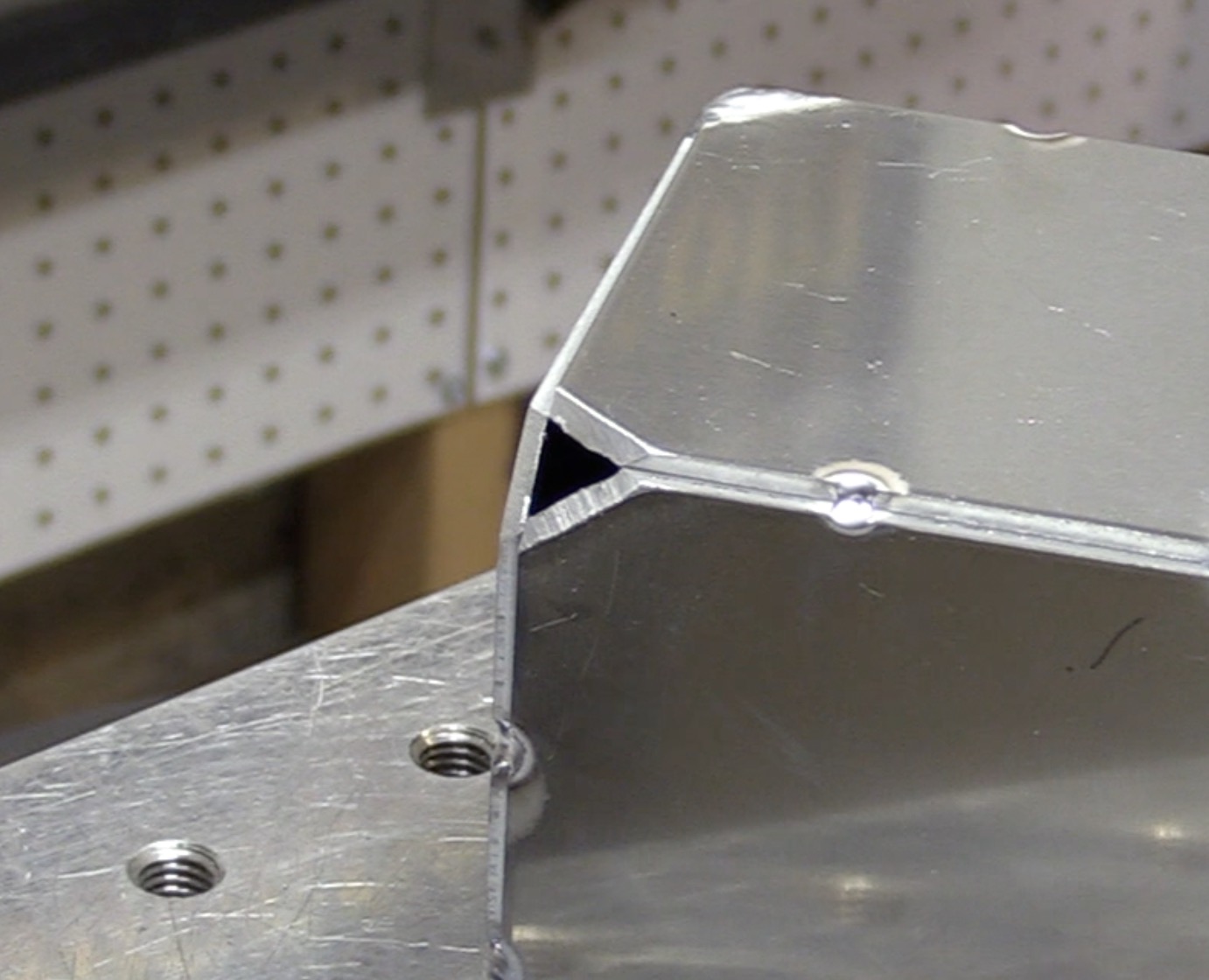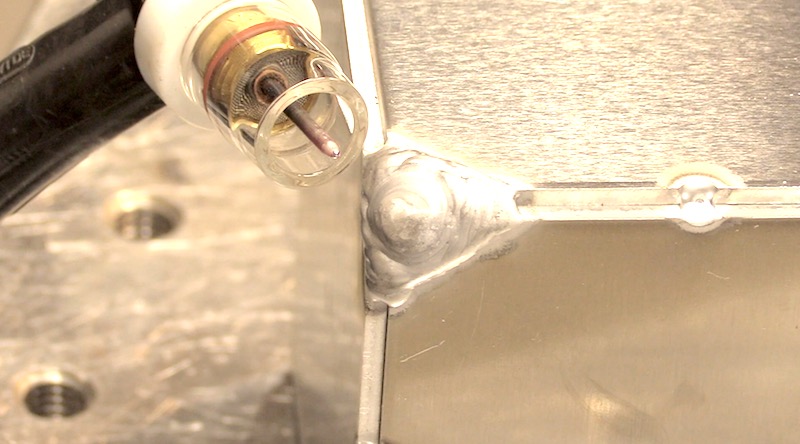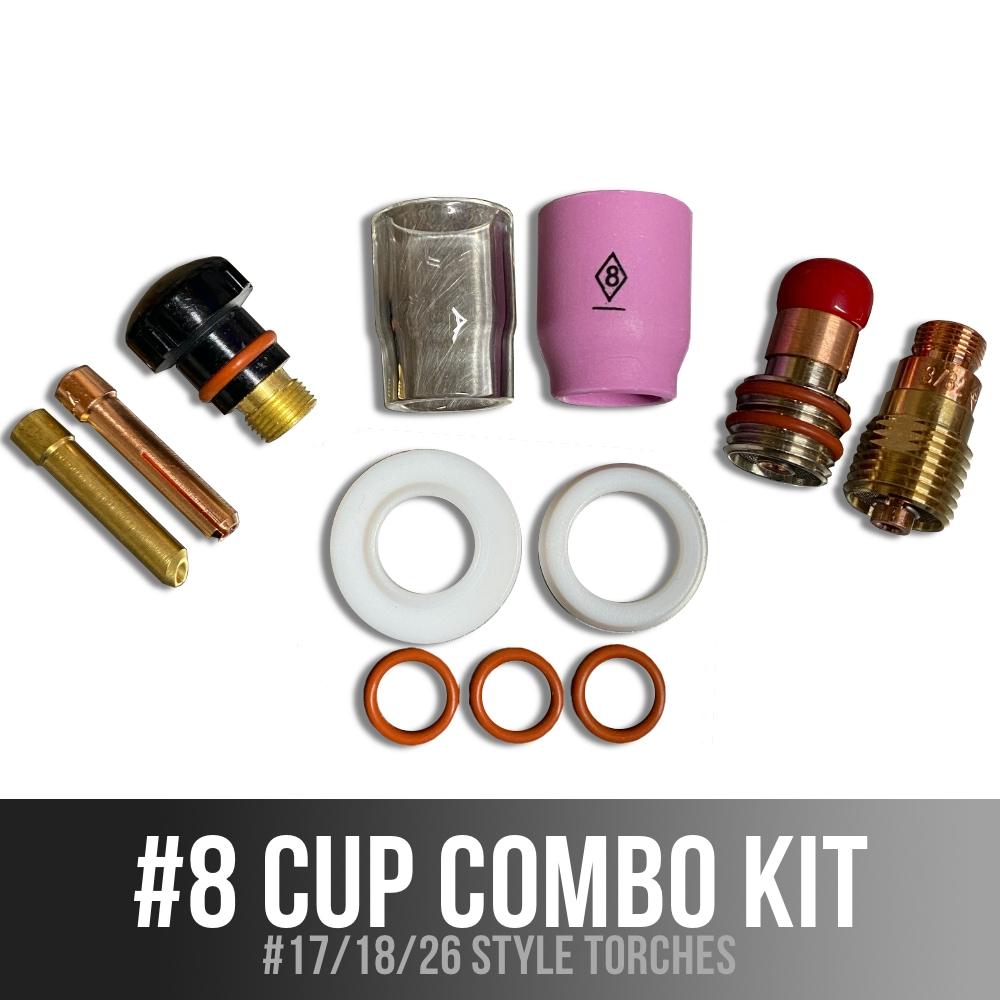Using a #8 TIG Cup for Filling an Aluminum hole
This is one of several videos showing how well a #8 TIG cup works on certain aluminum welding tasks.
gas lens vs standard collet body for aluminum
There are no hard and fast rules when it comes to selecting the best cup for aluminum.
Some welders prefer gas lenses...some prefer standard collet body cups.
I have my own preferences too and for me, it depends on the situation.
There are times when a standard #5 collet body works great with only 12-15 cfh of argon or argon/helium mix.
For fillet welds like tee joints, the #5 cup works great and saves gas.
But when welding on an edge, or with large diameter filler wire, I prefer a gas lens with a #8 cup to increase the size of the gas shielding envelope.
Welding on an edge can split the gas flow and create a venturi effect thereby drawing air into the argon and this craps up the puddle.
Thats the reason, I chose the gas lens with #8 clear cup.
A gas lens provides a larger, softer, less turbulent flow of gas.
#8 Tig cup with gas lens for welding holes and edges

For this video, I set up a mock up of a bend radius relief and welded it up...a common task.
And because, I was welding on 1/8" thick edges, I chose to use a clear #8 cup with around 18-20 cfh argon flow.
I used a ck worldwide mt200 ac/dc tig welder and used the recommended sweet spot settings for AC frequency and AC balance.
I set the amperage to 125 but only needed less than half of that to fill the holes.
(But for the outside corners I used all 125 amps.)

How to get the right setup for your Torch
There are so many different number torches and cups available that it can be confusing
Lets talk about the #5 cup first. And why so many people like it for aluminum.
It is true that the #5 standard collet body cup works great on aluminum and limits the cleaning action and focuses the energy better than larger cups and at the same time saves argon.
As probably know, Roy Crumrine and I and others like to mix a bit of helium for 1/8” thick and thicker…
And with a bit of helium mixed in, the #5 works crazy good and because flow rates are so low, it makes the helium last a long time. ( helium can be expensive)
And there is also the ally #5 clear cup that works the same but lets you see better.
Another thing is that if you step up to a 1/8” electrode for thicker aluminum, you might need to go to a bigger cup because a 1/8” electrode takes up almost all the cup and there is not much room for gas to flow around the electrode.
I also like to use gas lenses sometimes because when you weld on edges, corners, or when filling holes, the small #5 sometimes doesn’t have enough gas coverage to keep a clean puddle.
This is where I use a #8 gas lens.
I also like the furick 8 pro clear cup that uses a gas lens because sometimes its very helpful to be able to see thru the cup and the extra shielding helps for welding on an edge and for filling holes, or for times when you need to extend the electrode..
and for me, being older, using a clear cup is like someone turning the lights on in a dimly lit room.
Regular alumina ceramic cups that use gas lenses work fine too...
But... Its good to have all the options for every situation.
And here is the simplest way to tell what style torch you have.
If the collet body is less than an inch long , you have a 9/20 or 200 series torch
Click here to learn more about the 9/20 kit
If the collet body is around 2” long, you have a 17,18,26 or 300 series torch
click here to learn more about this 17,18,26 kit















